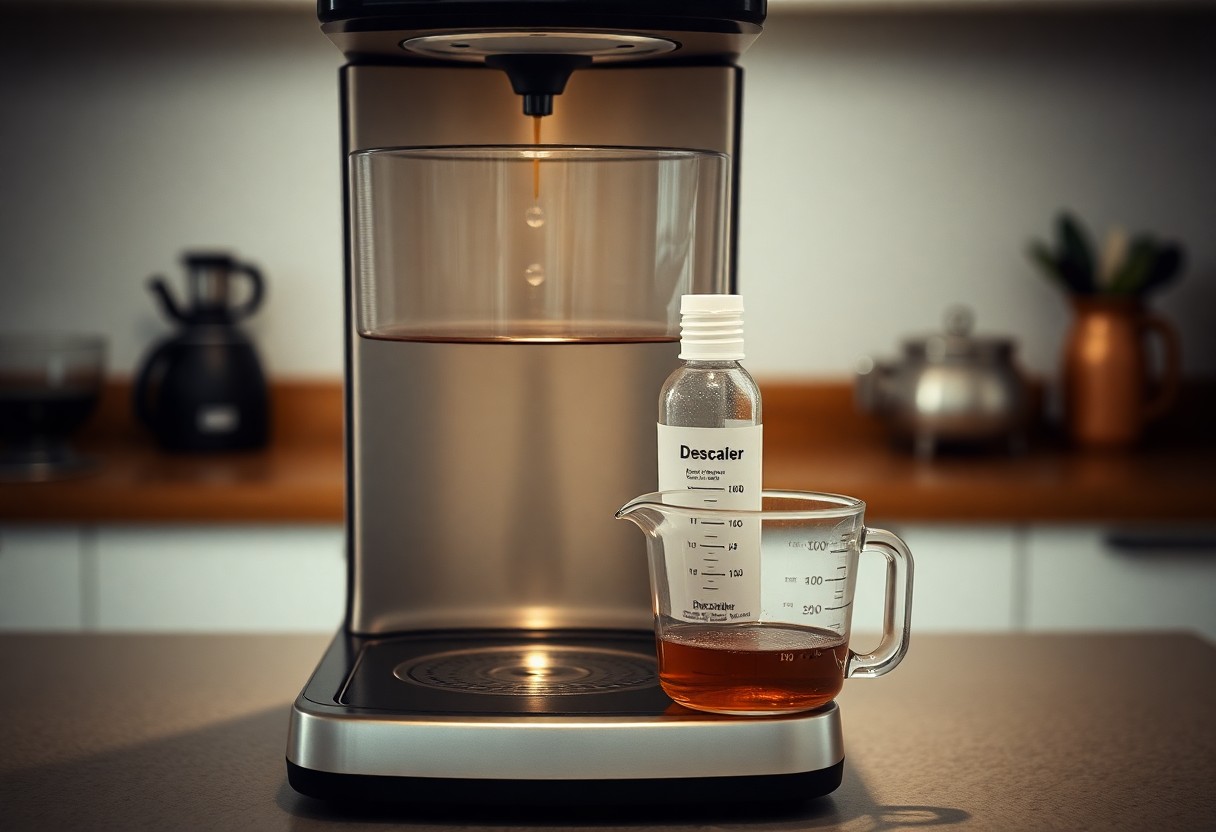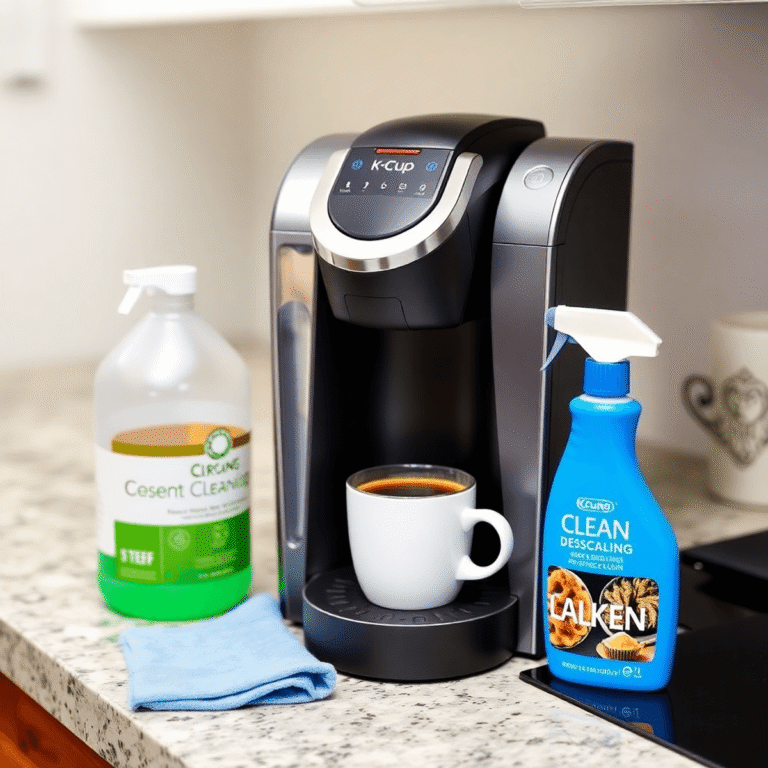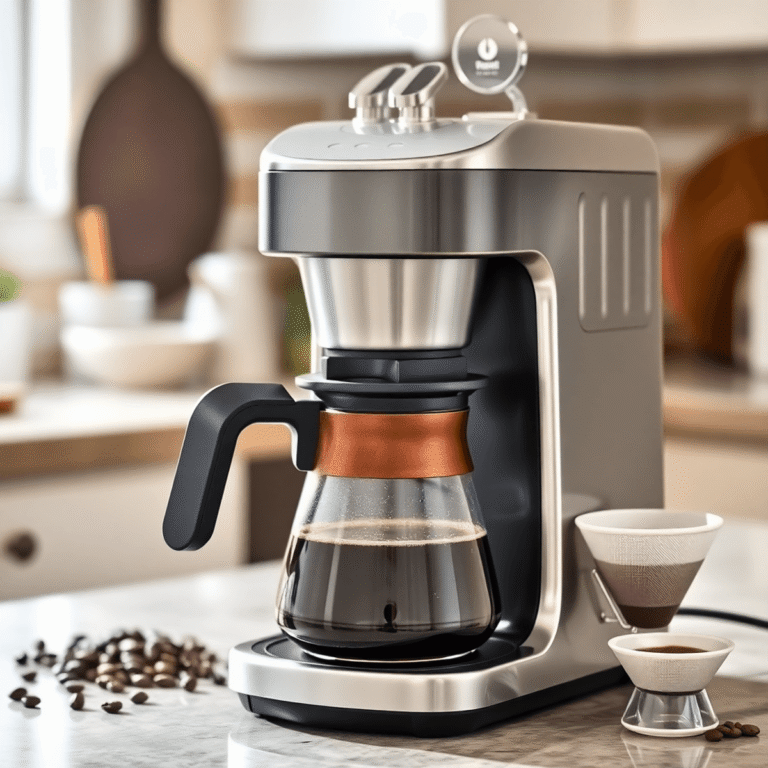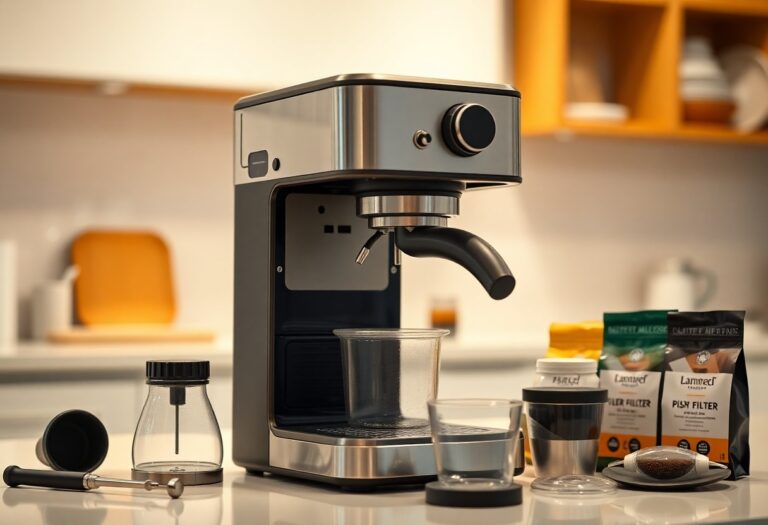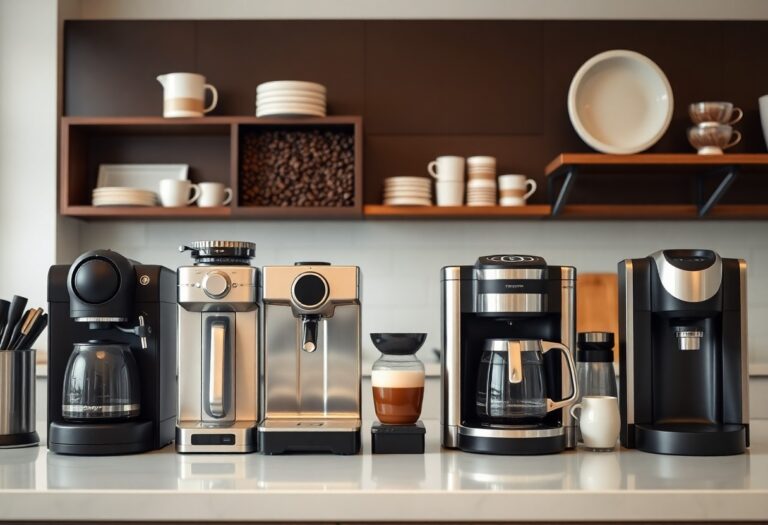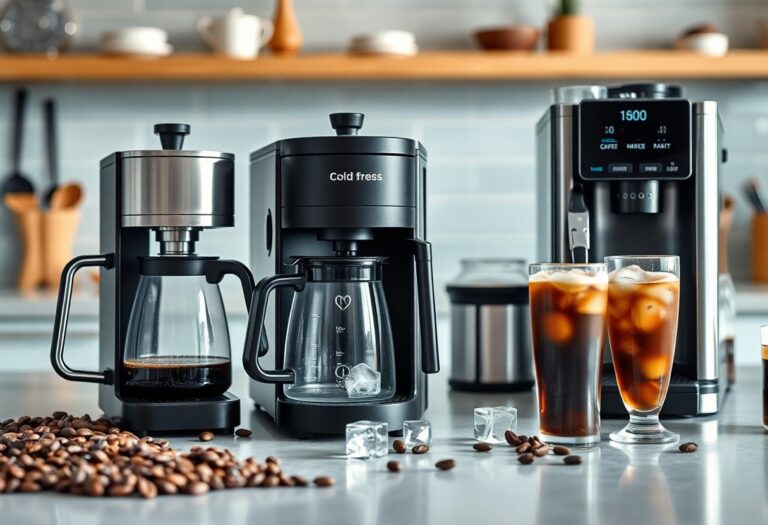How to Use Descaler in a Coffee Machine – Application Guide
Coffee is a daily ritual for many, but without proper maintenance, your machine can deliver less-than-stellar brews. Using a descaler is necessary to remove mineral buildup that can hinder performance and taste. In this comprehensive guide, you will learn how to effectively apply descaler to your coffee machine, ensuring your brews remain rich and flavorful. Failing to descale regularly can lead to decreased lifespan and potential damage to your appliance, so let’s examine the straightforward steps to keep your coffee experience exceptional.
Key Takeaways:
- Always read the manufacturer’s instructions for your specific coffee machine model before using descaler.
- Prepare the descaling solution as directed, usually mixing it with water to maintain the right concentration.
- Run a descaling cycle according to your machine’s settings, which may include different stages for thorough cleaning.
- Rinse the coffee machine multiple times with fresh water after descaling to remove any lingering descaling solution.
- Regular descaling is recommended every few months to ensure optimal performance and flavor quality in your coffee.
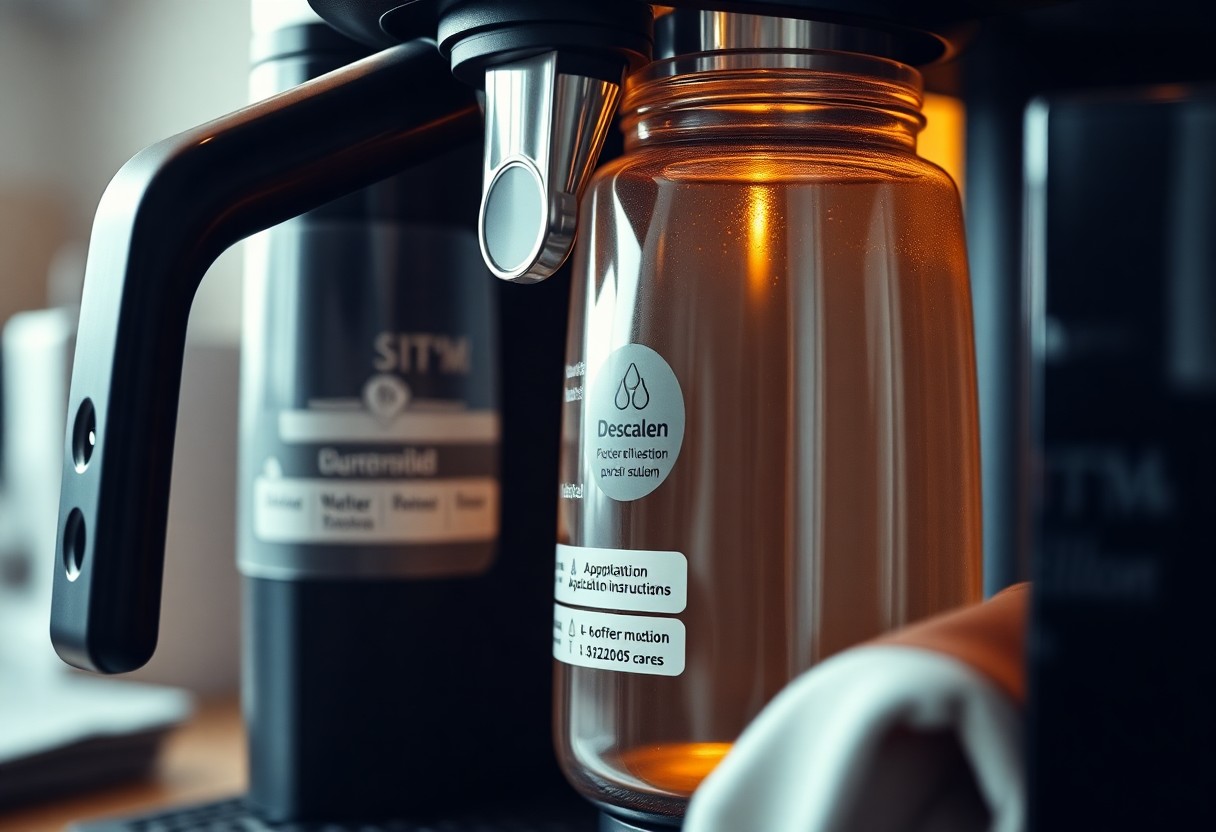
Decoding Your Coffee Machine’s Dueling Needs
Understanding the specific requirements of your coffee machine can significantly enhance your brewing experience. Different machines, whether espresso machines, drip coffee makers, or single-serve brewers, each have unique maintenance needs, including descaling frequency and water quality considerations. Assessing your machine’s compatibility with descalers and recognizing which type to use is necessary for maintaining optimal performance and taste in your coffee. Balancing between descaling, regular cleaning, and the quality of your brewing water will ultimately lead to a consistently enjoyable cup of coffee.
The Role of Water Quality in Brewing Perfection
Water quality intricately impacts the flavor and extraction of your coffee. Using filtered or bottled water prevents minerals and impurities found in tap water from compromising taste and machine longevity. A total dissolved solids (TDS) level below 150 ppm is ideal for achieving brewing perfection, as softer water enhances extraction, producing smoother and more flavorful coffee. Additionally, altering your water’s mineral content can adjust flavor profiles, offering you the chance to create your perfect cup every time.
Identifying When Your Machine Needs Descaling
Signs indicating your coffee machine requires descaling include slower brewing times, unusual noises, or a change in taste. Regularly inspecting your machine for these symptoms helps you stay ahead of potential issues. Most manufacturers recommend descaling every 1-3 months or after a specific number of brews, but hard water areas may necessitate more frequent maintenance to avoid mineral buildup. A quick check of the water reservoir for chalky residue can also provide clues; if you notice this, it’s likely time for a descaling session. Ignoring these signs can lead to long-term damage and compromised coffee quality.
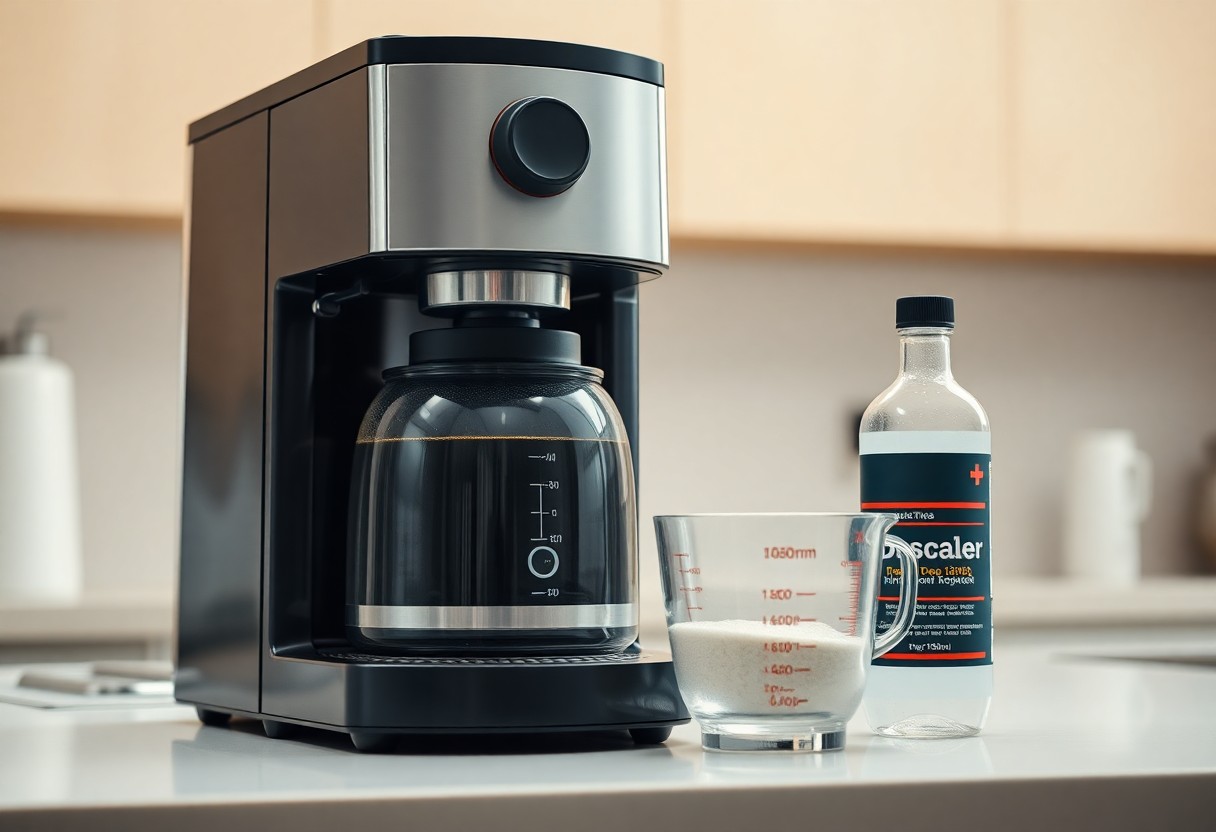
Choosing the Right Descaler for Your Coffee Machine
Selecting an appropriate descaler for your coffee machine ensures effective cleaning without causing any damage. Different machines may have unique requirements due to the materials used in their construction and the type of water hardness they typically encounter. Opting for a descaler approved by your coffee machine’s manufacturer guarantees compatibility and safety, ultimately prolonging your appliance’s lifespan.
Comparing Commercial vs. Homemade Descaling Solutions
| Type | Advantages |
|---|---|
| Commercial Descalers | Formulated for specific uses, usually more effective and consistent in results. |
| Homemade Solutions | Cost-effective, easily accessible, and can be eco-friendly if using natural ingredients. |
Key Ingredients to Look For in a Descaler
Focus on descalers with effective ingredients such as citric acid, lactic acid, or tartaric acid, which help dissolve mineral buildup efficiently. Strong acidic components are typically vital for breaking down limescale, making your chosen product highly effective. Additionally, check for formulations free from harmful chemicals that can damage internal components, ensuring safety alongside efficacy.
Citric acid, often derived from fruits, acts as a natural cleaning agent ideal for removing hard water deposits. Lactic acid is gentle on your machine yet powerful against scale buildup, ideal if you’re concerned about non-toxic solutions. Tartaric acid, commonly found in cream of tartar, provides similar benefits. Always ensure the descaler you choose aligns with your coffee machine’s specifications to achieve optimal results without compromising its function.
Step-by-Step Descaling Procedure
Follow this descaling process to keep your coffee machine in top shape and enhance the flavor of your brews. The step-by-step guide below will help ensure that you tackle the task efficiently. For specific guidance related to your machine, check out How to Descale your Keurig® Coffee Maker.
| Step | Description |
|---|---|
| 1 | Prepare descaling solution and water. |
| 2 | Fill the water reservoir with the solution. |
| 3 | Run the descaling cycle as per the machine’s instructions. |
| 4 | Rinse the system with fresh water post-descaling. |
Tools and Supplies You’ll Need
Gather a few basic items before starting the descaling process. You’ll require a suitable descaling solution, a clean water container, an access to fresh water, and possibly a soft cloth for wiping. Make sure everything is ready to ensure a smooth descaling experience.
A Detailed Walkthrough of the Descaling Process
The descaling process involves several straightforward steps that help remove calcium deposits. First, mix the descaler according to the package instructions, ensuring you have enough solution to fill your coffee machine’s water tank. Next, pour the solution into the reservoir. You then turn on the machine and start the descaling cycle. Make sure to follow your manufacturer’s specific instructions for optimal results. After the cycle completes, flush out the machine by running a few cycles with clean water to eliminate any residual descaler.
Effective descaling can take anywhere from 30 minutes to an hour, depending on the model of your coffee machine. While the machine runs its cycle, you can take this time to clean other parts like the drip tray or the carafe. Post-descaling, you should notice an improvement in the flavor of your coffee and a greater flow rate, making future brewing more enjoyable. Consistent maintenance in this area will keep your coffee machine operating efficiently and your beverages tasting fantastic.
Maintaining Optimal Performance Post-Descaling
After descaling, it’s vital to keep your coffee machine operating at peak efficiency. You can maintain its performance by regularly checking for any buildup of scale and keeping up with scheduled maintenance as outlined in the manufacturer’s guidelines. For more detailed insights, check out this guide on How do I descale my espresso machine? Consistent attention to these factors will ensure your coffee experience remains delightful.
Essential Tips for Regular Coffee Machine Care
Following a routine care schedule will extend the life of your coffee machine and enhance flavor consistency. Incorporate these practices into your regular maintenance:
- Clean the brew group regularly.
- Change the water filter as recommended.
- Wipe down the exterior to avoid dirt buildup.
- Inspect all parts for wear and tear.
- Run a clean water cycle weekly.
After implementing these tips, you’ll notice a significant improvement in your coffee machine’s reliability and performance.
The Impact of Consistent Descaling on Coffee Quality
Regular descaling directly influences the taste of your coffee. Scale buildup can alter the water temperature and pressure, leading to uneven extraction and affecting flavors. A machine free of mineral deposits ensures that water reaches optimal brewing temperatures, allowing for the full expression of your chosen coffee’s aroma and richness. This means less bitterness and acidity and promotes a balanced cup. Over time, neglecting proper descaling can result in inferior brews, diminishing the overall coffee experience you seek. Invest in timely descales to savor each cup to the fullest.
Troubleshooting Common Descaling Challenges
Descaling your coffee machine can sometimes lead to unexpected hurdles. If you encounter issues during the process, pinpointing the root cause is key to restoring your coffee’s flavor and your machine’s functionality. Check for signs of incomplete descaling, unusual noises, or persistent buildup, and address these issues systematically to ensure a fully-functioning coffee maker.
Addressing Persistent Mineral Build-Up
Persistent mineral build-up can result from neglecting regular descaling schedules. Use a more potent descaler designed for stubborn limescale, and run multiple descaling cycles if needed. Giving extra time for the solution to sit in the machine’s components can also help dissolve the deposits more effectively.
What to Do When Descaling Doesn’t Solve the Problem
Sometimes, descaling alone may not resolve issues like slow brewing or burnt flavors. If you’ve followed the descaling procedure and the problem persists, inspect other components for damage or wear, such as filters or water lines. You may also need to consult your machine’s manual or a technician for specialized guidance.
If descaling doesn’t alleviate the problem, consider checking the brew group for coffee residue or buildup that may interfere with water flow. Replacing the water filter can also improve performance, as clogged filters can restrict water supply. If these steps don’t work, disassembling your machine for a deeper clean or seeking professional service may be necessary, particularly if your coffee maker displays inconsistent behavior or unusual sounds. This proactive approach can help ensure a reliable brewing experience for the long term.
Final Words
The process of descaling your coffee machine is crucial for maintaining its performance and extending its lifespan. By following the application guide, you ensure that your machine continues to produce great-tasting coffee. Make it a routine part of your maintenance schedule to keep your coffee experience clean and enjoyable. With the right descaler and a straightforward approach, you’ll notice the difference in both flavor and efficiency, allowing you to savor every cup with confidence.
FAQ
Q: What is a descaler and why should I use it in my coffee machine?
A: A descaler is a cleaning solution specifically designed to remove limescale and mineral buildup that accumulate in coffee machines due to regular use, especially in areas with hard water. Limescale can negatively affect the machine’s performance, flavor of the coffee, and its longevity. By using a descaler, you can maintain your coffee machine in optimal condition, ensure consistent coffee flavor, and prevent potential malfunctions.
Q: How often should I descale my coffee machine?
A: The frequency of descaling depends on the hardness of your water and how often you use your coffee machine. As a general guideline, it is recommended to descale every 1-3 months. If you notice a decrease in performance, such as longer brewing times or unusual noises, consider descaling more frequently.
Q: How do I properly prepare my coffee machine for descaling?
A: Before descaling, ensure that your coffee machine is turned off and unplugged. Empty the water reservoir and remove any coffee grounds or filters. If your machine has a removable brew group, take it out for easier access. Finally, check the manufacturer’s instructions for any specific preparation steps related to your model.
Q: Can I use homemade solutions instead of commercial descalers?
A: While some people opt for DIY solutions like vinegar or citric acid, these may not be as effective and can sometimes lead to unwanted residue or damage over time. It’s generally recommended to use a commercial descaler that is specifically formulated for coffee machines to ensure safe and effective cleaning without harming the machine’s components.
Q: What steps should I follow to descale my coffee machine using a descaler?
A: To descale your coffee machine, start by mixing the descaler with water according to the package instructions. Pour the solution into the water reservoir, then run a brewing cycle without coffee grounds. Repeat the process if necessary, including running fresh water cycles afterward to rinse out any remaining solution. Lastly, reassemble your coffee machine and ensure it’s ready for regular use again. Always consult your machine’s user manual for any model-specific nuances.

